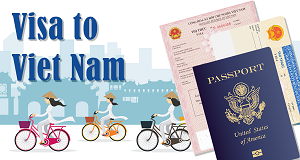Pilgrims seek spriritual high
Ha Noi, Feb. 5 (VNA) -- The Tet (lunar new year) festival is always an ideal occasion for visiting pagodas in Vietnamese cultural life.
"We come home to visit our relatives, seek local business opportunities and travel throughout the country to visit ancient communal houses and pagodas," a group of Viet kieu (overseas Vietnamese) said when they recently returned to the country.
One 60-year old Viet kieu woman said that since she left the country 30 years ago, what she most misses is visiting pagodas-not just those in her native village, but also those belonging to the Khmer minority in the Cuu Long (Mekong) delta.
"Tet is an ideal time for me to go to pagodas-from the Huong (Perfume Pagoda) in the north, to Khmer temples in the south. Their structures bear evidence of the continued development of our native civilisation, displaying the characteristics of the nation and contributing to the valuable treasure of Viet Nam's culture," she said.
There are about 600 Khmer pagodas in the Cuu Long Delta, which serve as the focal point of worship and a centre for the artistic, cultural and social activities of the Phum or Soc (village or commune).
Khmer pagodas always face east, due to the belief that Buddha turns from the West to bless the pagoda. The road to the pagoda is usually marked by a large gate engraved with intricate motifs.
The pagoda complex usually includes a central compartment, the congregation area for Buddhist monks and followers, the guest house, the school, the tower containing Buddhist relics, and the crematory.
Pagodas are designed according to a set of standard specifications. For instance, in the central compartment the width is always equal to two-thirds of the length; the height is equal to the length and the roof is a pointed triangle structure. The number and orientation of doors, windows and steps is also dictated by fixed design principles.
The roof of Khmer pagodas has three grades, each grade divided into three steps. The central step is higher than the others, lending Khmer pagodas their elegance. Dragon tails at the end of the apex add to the grace of the roof. The tails can be up to 2m high and taper into a gracefully undulating shape that gives the sense of an oar in motion.
The roof is also specially designed to ventilate the interior, meaning that Khmer pagodas are cooler and fresher than those in the north, even at the height of the stifling southern summer.
Inside, Khmer pagodas boast a large open space offset with large pillars.
Architectural decoration is highly prized in Khmer art, and pagodas offer some of the finest examples of this tradition. Dragons, bird-bodied fairies, the God Bird, girl-bird dancers, ogres, the Earth God and snakes with many heads are some of the most famillar motifs.
Images of plants and flowers, especially the lotus, are also dominant symbols.
The central compartment is devoted to paintings retelling the story of Buddha from birth to his entry into nirvana.



